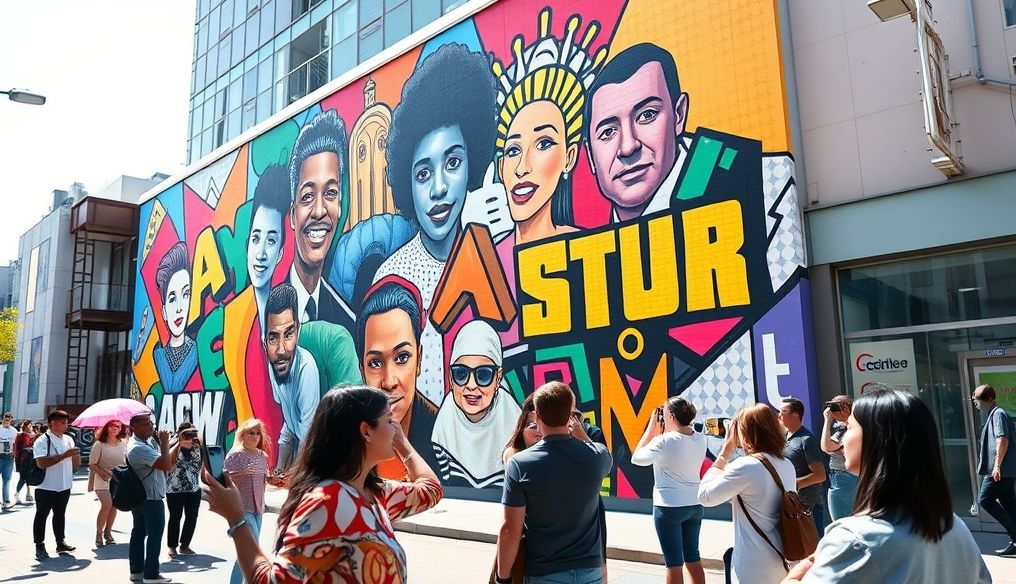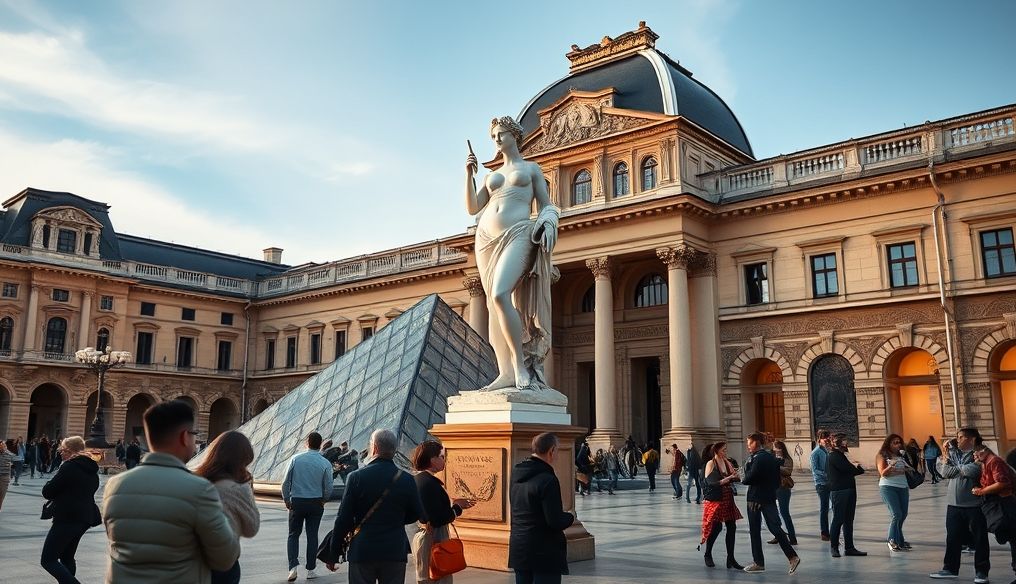Is Street Art (Graffiti) Vandalism or a Worthy Creative Expression?
Street art, or graffiti, is an art form that appears in public spaces, often without permission. This type of art sparks widespread debate, with some considering it vandalism and defacement of property, while others see it as a vital artistic expression worthy of appreciation. This article will address this debate from multiple angles, reviewing the history of graffiti, its various forms, and the differing perspectives surrounding it, in addition to the social and economic impacts of this art.
The History of Street Art: From Writing on Walls to a Global Art Movement
The history of writing on walls dates back to ancient times, where people used walls to express their opinions, record events, or even leave simple messages. However, graffiti as we know it today began to emerge in the 1960s in New York City, where young people used walls and subways to express themselves and leave their mark on the city.
The Origins of Graffiti in New York
The graffiti movement in New York began as a form of self-expression among young people, especially in poor neighborhoods. The initial goal was to write names or distinctive tags in large sizes and bold colors. These tags quickly evolved into more complex and detailed drawings, with the use of new styles and techniques.
The Evolution of Graffiti into an Art Movement
Over time, graffiti began to gain wider popularity, and artists began to develop their styles and techniques. New types of graffiti emerged, such as large murals and three-dimensional drawings. Some artists also began using graffiti to express social and political issues, making it a means of expressing opinion and influencing society.
Types of Street Art: From Simple Tags to Complex Artworks
Street art is not just writing on walls; it includes a variety of styles and techniques. Street art can be divided into several main types, each with its characteristics and features.
- Tags: The simplest forms of graffiti, usually consisting of the artist's name or nickname written in a quick and simple font.
- Throw-ups: Larger drawings than tags, usually consisting of the artist's name written in bold colors and a distinctive style.
- Pieces: More complex and detailed drawings than throw-ups, requiring more time and effort to complete.
- Murals: The largest types of graffiti, covering large areas of walls. Murals are often artistic or social in nature and are used to express specific issues or beautify public spaces.
- Stencils: A technique that uses pre-made templates to draw shapes and drawings on walls. This technique allows for the production of accurate and repetitive drawings quickly and easily.
- Street Art Installations: Artworks that use various materials to create three-dimensional installations in public spaces. These installations aim to interact with the public and stimulate thinking and reflection.
Perspectives on Street Art: Between Vandalism and Creativity
Opinions on street art are conflicting, with some seeing it as vandalism of public property and defacement of the public landscape, while others see it as a vital artistic expression worthy of appreciation. These conflicting opinions reflect the different values and beliefs of individuals and communities.
The First Opinion: Street Art is Vandalism and Defacement
Those who hold this opinion believe that street art defaces public and private property and reduces its value. They consider that artists are vandalizing walls and buildings without permission, causing economic and social damage. They also believe that street art is often ugly and non-artistic, and does not add aesthetic value to public spaces.
The Second Opinion: Street Art is Creativity and Artistic Expression
Those who hold this opinion believe that street art is a form of artistic expression and reflects the culture and concerns of society. They consider that artists use walls as canvases to express their opinions and feelings, and to add an aesthetic touch to public spaces. They also believe that street art can be a means of expressing social and political issues, and of stimulating discussion and reflection in society.
The Social and Economic Impacts of Street Art
Street art has multiple social and economic impacts, both positive and negative. Street art can affect the image of the city, tourism, property prices, and social cohesion.
Positive Impacts
- Beautifying Public Spaces: Street art can transform ugly walls into beautiful artworks, adding an aesthetic touch to public spaces and improving the image of the city.
- Attracting Tourism: Street art can attract tourists to cities, where they consider it part of the city's culture and heritage. This can lead to increased tourism revenue and the creation of new job opportunities.
- Expressing Social Issues: Street art can be a means of expressing social and political issues, and of stimulating discussion and reflection in society. This can lead to increased awareness of important issues and to positive changes in society.
Negative Impacts
- Property Vandalism: Street art can cause vandalism of public and private property, reducing its value and causing economic damage.
- Defacing the Public Landscape: Street art can deface the public landscape if it is ugly or inappropriate for the place. This can lead to a deterioration of the city's image and reduce its attractiveness.
- Increasing Crime: Street art may be associated with crime, as some consider it a sign of chaos and instability. This can lead to increased fear and crime in society.
Law and Street Art: Between Criminalization and Legalization
The laws relating to street art vary from country to country and from city to city. In some places, street art is considered a crime punishable by law, while in others, it is legalized and regulated.
Criminalization
In many countries and cities, street art is considered a crime punishable by law. Artists who paint on walls without permission are considered lawbreakers and may face fines or imprisonment. These laws aim to protect public and private property and maintain the public landscape.
Legalization and Regulation
In some cities, street art is legalized and regulated. Specific places are allocated for artists to paint legally, and art competitions and exhibitions are organized to showcase their works. These measures aim to support artists and encourage creativity, while maintaining public order and protecting property.
Examples of Global Cities That Have Successfully Dealt with Street Art
There are many cities around the world that have successfully dealt with street art and turned it into part of their cultural and economic identity. Among these cities are:
- Berlin, Germany: Berlin is famous for its vibrant and diverse street art, which is considered part of the city's history and culture. The local government allows artists to paint on some walls legally and supports artistic initiatives aimed at promoting street art.
- Medellin, Colombia: Medellin has undergone a major transformation thanks to street art, which has helped improve the city's image and attract tourists. The local government supports artists and provides them with the spaces they need to express themselves.
- Melbourne, Australia: Melbourne is famous for its laneways filled with street art, which are a popular tourist destination. The local government allows artists to paint on some walls legally and supports art festivals that celebrate street art.
Conclusion: Towards a Balanced View of Street Art
Street art is a complex and multifaceted phenomenon, and it cannot be judged definitively. We must look at street art from a balanced perspective, taking into account the positive and negative aspects. Street art can be a vital artistic expression and a source of inspiration and creativity, but it can also be vandalism and defacement of property. We should strive to find compromise solutions that allow artists to express themselves legally and responsibly, while maintaining public order and protecting property.




